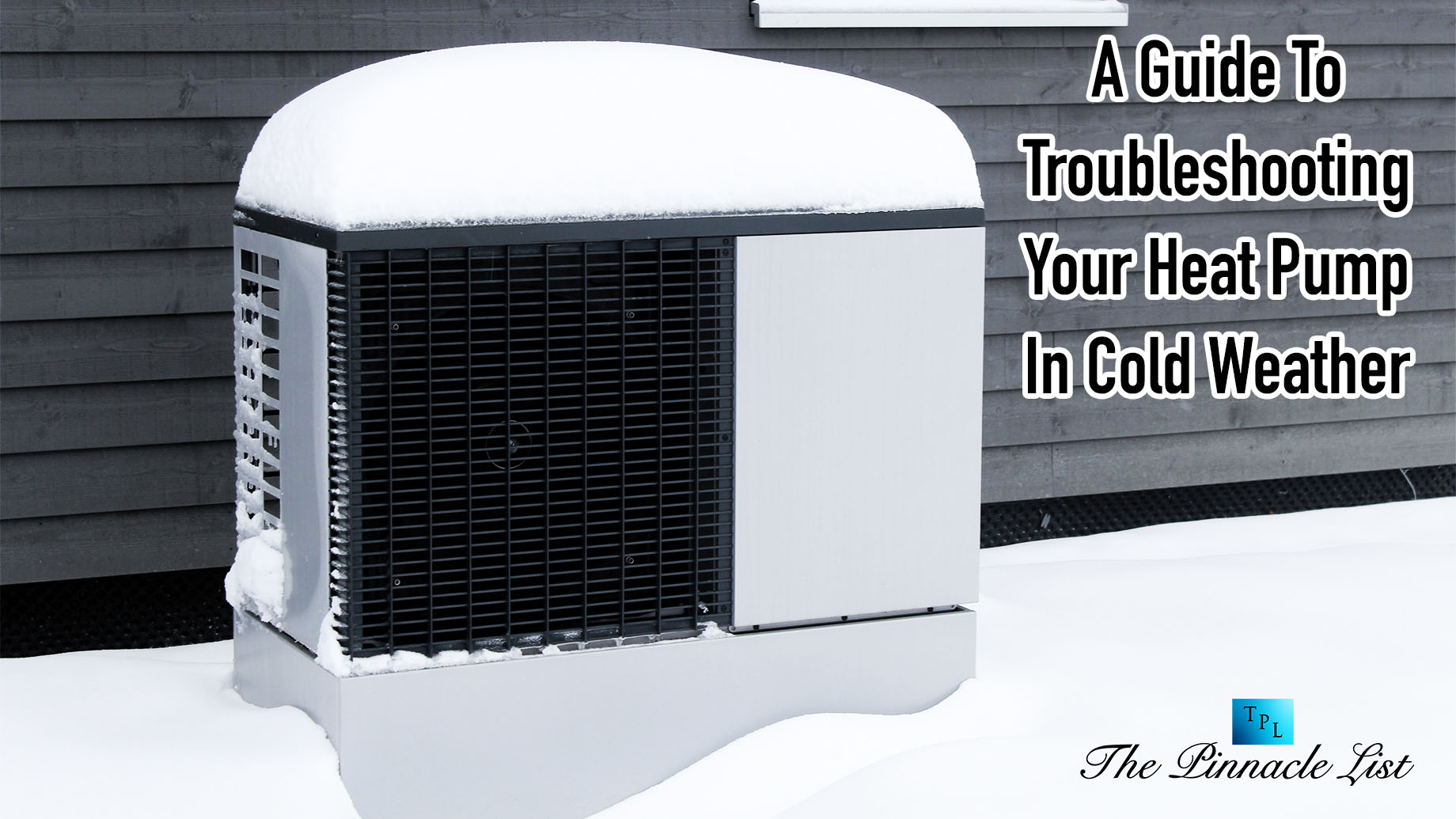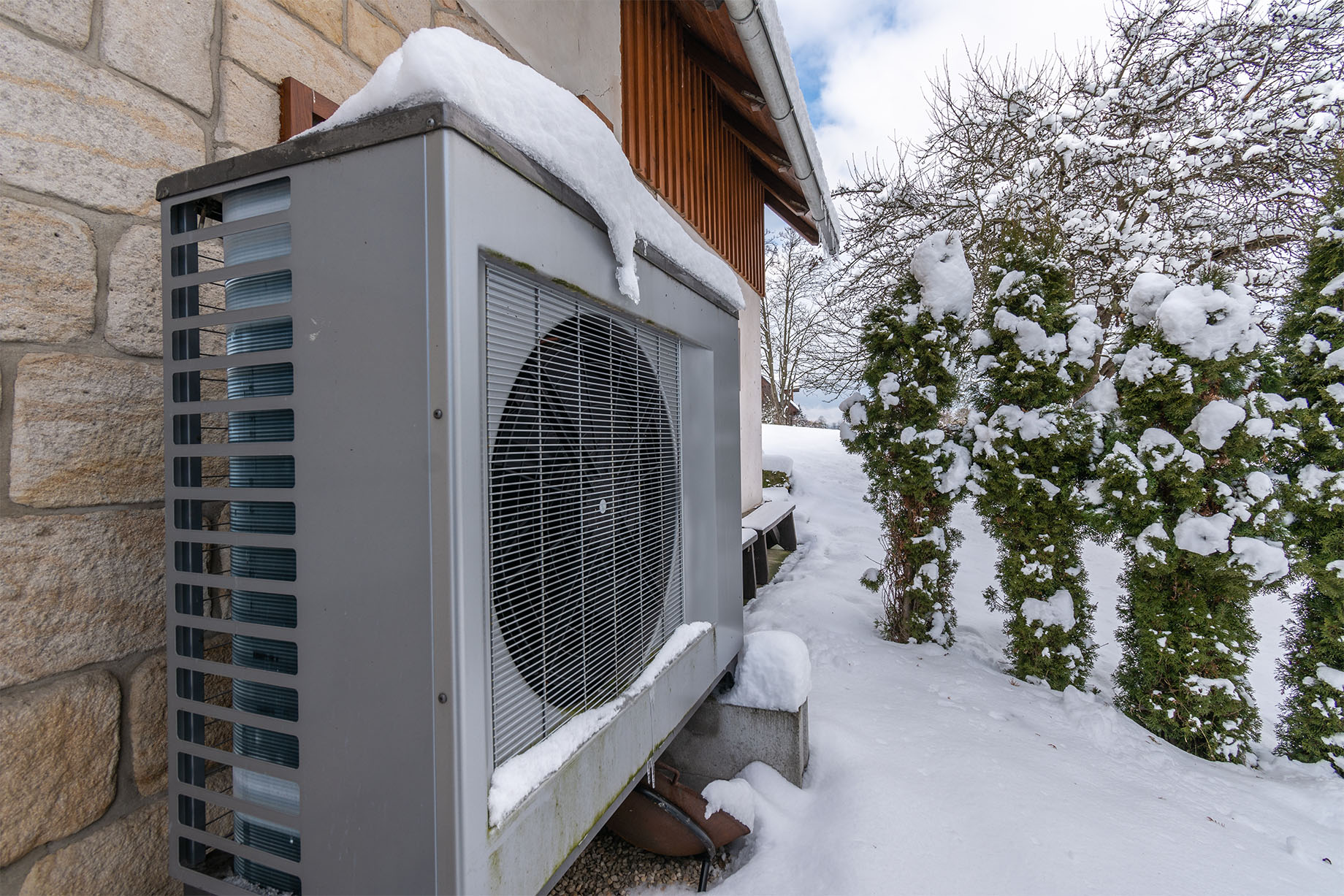
When winter temperatures plummet, your heat pump system becomes your home’s primary defence against the cold. Most efficient heat pumps can operate effectively even when temperatures drop well below freezing points. However, they can be subject to wear and tear.
Understanding basic heat pump troubleshooting steps can help you maintain comfort and avoid costly repairs during the harshest months. This guide will walk you through common heat pump problems and their solutions, helping you determine when to attempt fixes yourself and when to call a heating, ventilation, and air conditioning (HVAC) professional.
Common Heat Pump Problems in Cold Weather

Your heat pump operates through heat transfer, extracting warmth from outside air, even in cold temperatures. When your outdoor heat pump struggles to capture enough heat, you might notice various issues affecting your indoor comfort.
Frost and Ice Formation
Your heat pump’s defrost cycle should automatically prevent excessive ice buildup when temperatures drop. A persistent icing on your outdoor unit could indicate several possible causes, including a broken reversing valve or low refrigerant levels. A refrigerant leak can significantly impair your system’s performance. That’s why it requires immediate attention from an HVAC expert Vaughan residents have come to trust. You can also find an experienced technician in your location to address the issue.
Airflow Issues
A clogged air filter or dirty air filters are often the culprits for poor performance. Your indoor air handler needs proper airflow to maintain room temperature effectively. Regular cleaning or replacement of dirty air filter components ensures your HVAC system operates at peak efficiency. The outdoor unit should also remain clear of snow and debris to prevent short cycling.
Essential Heat Pump Troubleshooting Tips
Systematic troubleshooting can save you time and potentially costly heat pump repair costs. Following a structured approach helps identify issues quickly and accurately.
Basic System Checks
Start with these foundational checks, as they often reveal the most common issues without requiring specialized knowledge or tools.
System Power and Electronics
- Verify your circuit breaker hasn’t tripped. Locate both the indoor and outdoor unit breakers.
- Check if the emergency heat switch is activated, which could indicate a previous problem.
- Inspect your starter capacitor for signs of bulging or leaking.
- Test the thermostat’s functionality by switching between modes.
- Look for error codes on your display panel that could guide troubleshooting.
These steps can quickly identify simple problems that might be affecting your system’s performance.
Maintenance Assessment
- Examine air handler filters. Even partial clogging can significantly reduce efficiency.
- Clear snow, ice, or debris accumulation around the outdoor unit.
- Check condensate drain lines for blockages that could trigger safety shutoffs.
- Listen for unusual grinding, squealing, or rattling during operation.
- Monitor defrost cycles. They should occur periodically but not constantly.
These basic checks often resolve common issues and can prevent unnecessary service calls. If these inspections reveal any concerns, address them promptly to prevent more serious problems from developing.
Advanced Troubleshooting Steps
When basic checks don’t identify the problem, these more detailed investigations can help pinpoint specific issues.
Hiring services that specialize in heat pumps can provide you with a comprehensive analysis of your system and ensure that all components are functioning properly. These professionals have the expertise to repair or replace faulty parts, improving the efficiency and longevity of your heat pump.
Monitor Airflow Patterns
- Hold a piece of tissue paper near each vent to check for proper air movement.
- Compare airflow between different rooms. Significant differences could indicate duct issues.
- Feel for cold spots along insulated refrigerant lines.
- Check for ice formation patterns on the outdoor unit.
Analyze Operation Cycles
- Time how long your system runs before shutting off.
- Note if it’s short cycling or running for very brief periods.
- Monitor if auxiliary heat is engaging more frequently than usual.
- Observe whether the outdoor fan is running when it should be.
Understanding these patterns and cycles helps identify whether your system is operating normally or showing signs of potential issues. Document any unusual patterns to share with a technician if needed.
When to Seek Professional Intervention
While basic heat pump troubleshooting can resolve many common heat pump problems, certain situations require professional heat pump service. Contact an HVAC technician immediately if you notice:
- Persistent thermostat problems despite recalibration
- Cold air blowing when in heating mode
- Unusual noises from your indoor air handler
- Signs of a refrigerant leak
- Complete system failure
These problems require specialized tools, skills, and expertise to diagnose and fix. Embracing a do-it-yourself approach may not be the best decision and could endanger you and your family’s lives.
Emergency Measures
When facing sudden system issues during extreme weather, knowing how to respond quickly can prevent both discomfort and damage to your system. Do these simple checks if your heat pump fails during extreme cold.
- Determine whether your outdoor unit is blocked by snow or ice.
- Verify your thermostat settings.
- Ensure your backup heating system is functional.
- Contact emergency repair services if necessary.
Understanding these emergency procedures can help you manage urgent situations effectively while waiting for professional assistance. It’s important not to touch your unit as you could get electrocuted if you touch the wrong parts. A mild electric shock may not be fatal, but it can still lead to burns or organ and tissue damage.
Preventive Maintenance
Regular maintenance is crucial for preventing heat pump problems. Schedule professional inspections before extreme weather arrives to ensure the following:
- Proper refrigerant levels
- Clean and efficient airflow
- Optimal defrost cycle operation
- Proper air conditioner function for year-round comfort
A proactive approach to maintenance can significantly reduce unexpected issues and extend your system’s lifespan. Taking these preventive steps can save you considerable time and money in the long run while ensuring consistent comfort throughout the year. It will also help if you weatherproof your property, for example, by replacing broken windows or properly sealing your doors.
Final Thoughts
Your heat pump plays a vital role in maintaining your home’s comfort during cold weather. While some issues require professional help, understanding basic troubleshooting lets you maintain optimal performance and know when to seek expert intervention. Regular maintenance and prompt attention to minor problems can prevent major repairs and ensure reliable heating throughout the winter season.
For proper maintenance and repair, it’s always best to contact HVAC experts near your area. Working with specialists helps you care for your heat pumps in the best way possible.